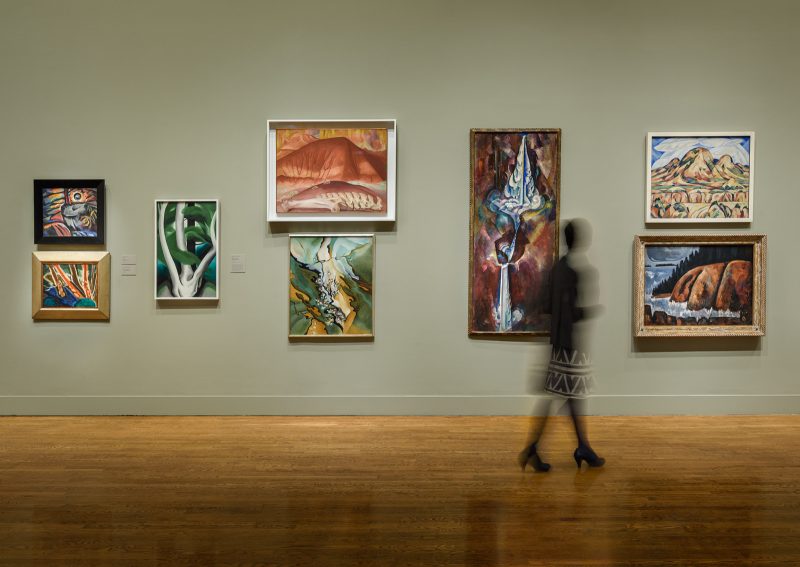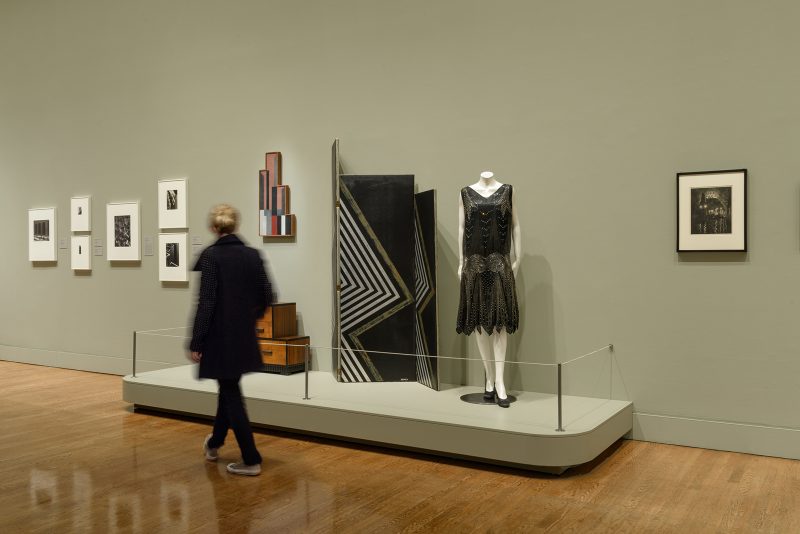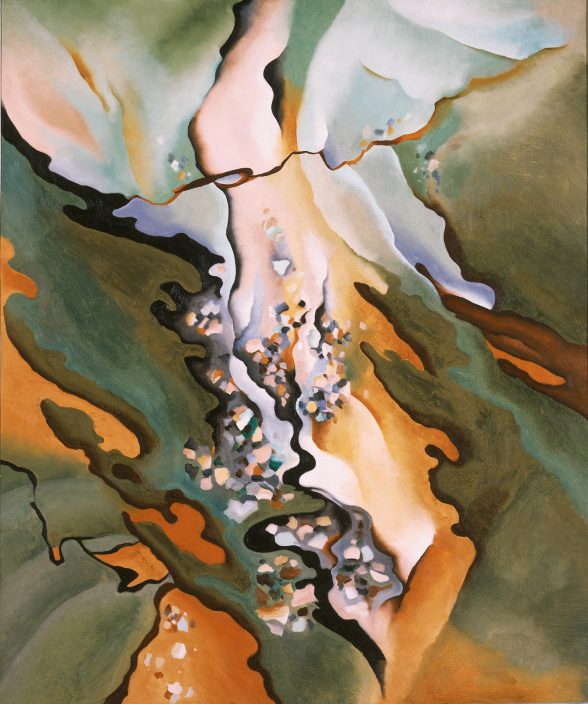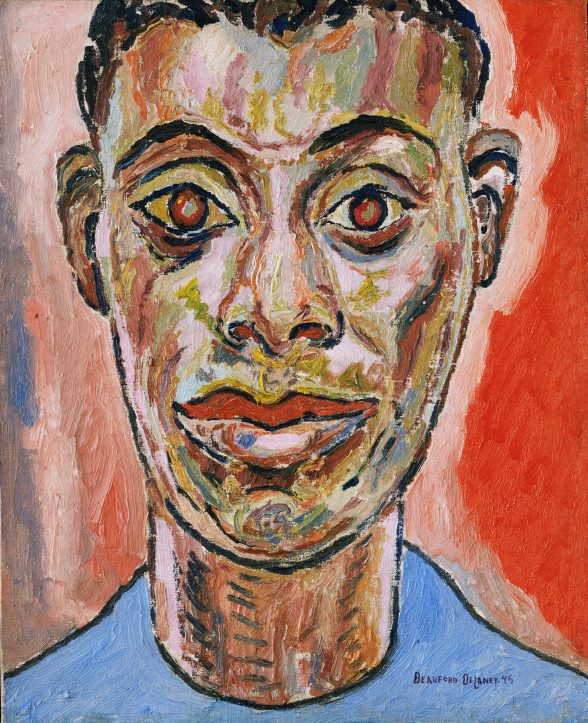“Modern Times: American Art 1910-1950” at the Philadelphia Museum of Art (PMA) through Sept. 3, 2018 is a splendid overview of selected tendencies in American modernist art — and almost all the work is from the museum’s collection. It offers a glimpse of the cultural wealth hidden in the PMA’s storerooms, and adds to the anticipation of the 2020 opening of the museum’s Core Project, which will expand its public spaces by 90,000 square feet. New galleries will enable works from the American modernist collection to be on permanent view.

“Modern Times” was organized by Jessica Todd Smith, Susan Gray Detweiler Curator of American Art and Manager, Center for American Art, who while emphasizing painting, wisely decided to include sculpture, decorative arts, photography, prints and clothing from the period. The exhibition is beautifully installed and sensitively organized, with sections devoted to topics such as modern life, still life painting, urban and natural landscapes, color, and the animated figure. It makes no attempt to include either Surrealism, social realism, or geometric abstraction — emphasizing instead the collection’s strengths and the contributions of artists working and/or trained in Philadelphia.
A multimedia approach
Film will be included in a special Final Friday program on June 29th with Charlie Chaplin’s chagrined response to industrial working conditions, “Modern Times,” which will be shown with a newly-commissioned musical accompaniment. This is only one of a broad and imaginative range of public programs which include a lecture by Wanda Corn — a scholar who wrote the most original book on American art of the period and recently organized an exhibition about Georgia O’Keeffe’s wardrobe. There will also be musical performances by Farid Barron, the Drew Nugent Trio, the Ladybugs and Arpeggio Jazz Ensemble (Friday Nights in August), and a Lego workshop on modern architecture.

The inclusion of multiple media enables some unanticipated connections, such as the marvelous arrangement devoted to Art Deco which evokes the elegant stylishness of a Cole Porter song. It juxtaposes a photograph of the PFSF building with: a leather and chrome chair that its architects, Howe and Lescaze, designed for the skyscraper’s interiors, a glamorous painted leather and aluminum screen by Donald Deskey, a Russell Wright table set with salt and pepper shakers and a pitcher for melted butter intended for either corn on the cob or pancakes (both American specialties), and the most stunning, beaded flapper’s dress (American, designer unknown) with motifs identical to those employed by architects and interior designers of the era. It is no small irony that during a period that celebrated industrialization, the dress’s beading required an extraordinary amount of skilled handwork.
Out of the shadow of Europe
While some of the artists exhibited were immigrants and others traveled or studied in Europe, most artists working in America prior to WWII were isolated from European Modernism and therefore generally considered to be provincials. This was clear at the famous 1913 Armory Show, which introduced the American public to European artists from Paul Cezanne and Henri Matisse, to Pablo Picasso and Marcel Duchamp (with his “Nude Descending a Staircase,” PMA). They were shown along with Americans including Marsden Hartley, Childe Hassam, Robert Henri and Edward Hopper — to select only the “h”s — and many of the American artists complained that the Europeans stole most of the attention. When the Museum of Modern Art, New York (MoMA) was founded in 1929, it exhibited only European painting and sculpture, although it acknowledged American design. The Whitney Museum of American Art was created in part to exhibit those artists MoMA ignored.
There were also numerous factions among the American artists, and “Modern Times” gives prominence to the group exhibited by photographer and gallerist Alfred Stieglitz, who also introduced European modernists to New York. Many of the works by Georgia O’Keeffe, Arthur Dove and Marsden Hartley are from Stieglitz’s own collection, donated to the PMA under O’Keeffe’s direction. But the exhibition covers considerably more breadth, beginning with Ashcan School painters John Sloan and George Bellows, including a range of decidedly 20th century landscapes — from high-colored depictions by Arthur B. Carles and his followers to a dark snowscape by Horace Pippin — and closing with work by Willem de Kooning and Jackson Pollock that predates Abstract Expressionism.
Expanding the canon
The exhibition includes work by a number of women and African Americans who, until recently, have been left out of the canon of American art history, including Berenice Abbott, Claude Clark, Beauford Delaney, William Edmonson, William H. Johnson, Jacob Lawrence, Dorothy Norman, Florine Stettheimer, Kay Sage Tanguy, Dox Thrash and Marguerite Thompson Zorach. Detweiler indicated that she is interested in strengthening their representation.
“Modern Times” is an exhibition that shows the PMA looking its best and is certain to offer pleasure and expanded understanding to visitors regardless of their taste or prior knowledge of the material. Indeed, I was surprised to discover a number of artists for the first time, among them Frances Simpson Stevens, Harold Weston, Henry McCarter, and Edith Clifford Williams. I look forward to more discoveries from this collection, for we are seeing only a tip of the iceberg of the PMA’s extraordinary holdings.
“Modern Times” is currently on view at the Philadelphia Museum of Art through September 3, 2018.











